The Smart Tools for Orchard Drainage project has completed key steps to prepare and implement inter-row land levelling. Terrain analysis has provided a clear indication that a gentle gradient could be developed along the inter-row with minimal soil movement. However, the effects of reducing ponding through slight land shaping would be substantial for management and health and safety in the orchard.
Orchard Contour Mapping
LiDAR data from Hawke’s Bay Regional Council and Gisborne District Council were used to assess the feasibility of inter-row land levelling in the orchard blocks of interest. LiDAR (light detection and ranging) is a type of airborne optical sensing that is used to generate a model of the earth’s surface. It let us create contour maps and look at ground profiles (Figure 1).

The inter-row profiles were used as a ‘first look’ to estimate the fall across the orchard and provide an indication of the approximate amount of soil to be shifted to remove and prevent areas of ponding.
We also surveyed using ground-based vehicles (quad bike or tractor) with RTK GPS (Figure 2). This system has a vertical accuracy of approximately 20 mm. Corrected elevation data were recorded along the inter-rows using WM-Drain. These data were also used to create accurate interrow profiles.


The comparison of the different methods of generating profiles has given confidence that LiDAR is useful for an initial block analysis.
Ponding maps
Two of the orchards were visited after a significant rain event (30+ mm over a weekend). Locations of ponding were collected using the ESRI Collector smartphone app and an EOS Arrow SBAS GPS with a horizontal accuracy of 30-40cm. The interrows at one orchard were covered by Extenday, which meant the areas of shallow ponding were difficult to identify (Figure 6).

A drainage analysis created in Optisurface was used as a base map to display ponding locations (Figure 7). After this rain event, the majority of areas of ponding appeared to be located within areas identified by the drainage analysis as areas where ponding would occur.


The ponding locations were also compared to the interrow profiles. Although no formal analysis was completed, many of the ponding spots appear to match dips in the profiles (Figure 9).

Rut depth measurements
The key measurement for monitoring the effectiveness of the different drainage treatments will be the formation of ruts. A sled has been specifically designed to measure and record the depth of ruts and the location within the orchard blocks, see Figure 10.
The sled uses a linear transducer to measure the difference in height between the bottom of the wheel ruts and the ground surface between the wheel tracks. The location is recorded using the SBAS positioning system with an EOS Arrow 100 GPS with a horizontal accuracy of approximately 0.3-0.4m. The data was recorded on a smartphone using an app, Rut-O-Meter. Points are recorded approximately every 0.2m depending on travel speed as the sled was towed by a quadbike along orchard rows.

The average rut depth (of the left and right wheel tracks) throughout the trial block was measured prior to the soil being cultivated. An example of the rut depth along an orchard row and the corresponding elevation profile are presented in Figure 11.

A map from the rut measurements is shown in Figure 12. Deeper ruts are darker blue. Pale yellow is no rutting or the inter-row is lower than the wheel tracks. This compares well with the OptiSurface generated ponding map of the block (Figure 13).

 Figure 13: OptiSurface drainage and ponding analysis from RTK survey of the trial block
Figure 13: OptiSurface drainage and ponding analysis from RTK survey of the trial block
Conclusions
- Analysis of LiDAR data and ground based RTK elevation data has shown that land levelling should be possible with minimal soil movement.
- The ground based RTK survey, with the GPS antenna on a 2m pole has proven that the connection is not interrupted through dense tree canopies.
- The use of the SBAS system, a cell phone and EOS Arrow GPS receiver allows information to be recorded against individual trees, with an accuracy of 30-40cm, even in dense tree canopy.
- The ponding areas identified in the orchard after a significant rain event appear to show a relationship to the OptiSurface drainage analysis.
- The Rut-O-Meter mapping shows good agreement with the other surveys
Project work by Page Bloomer Associates for NZ Apples and Pears Inc and MPI Sustainable Farming Fund



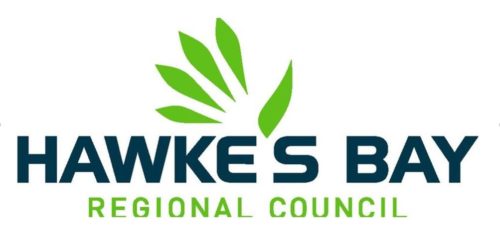
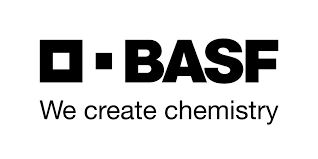
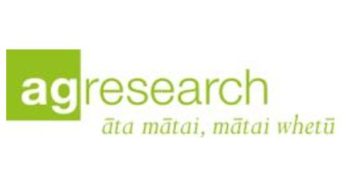
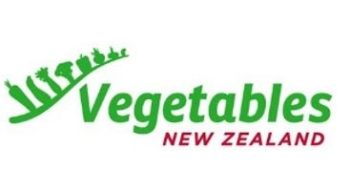
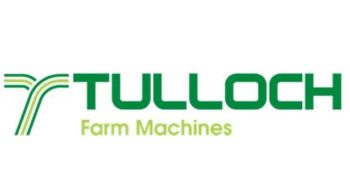
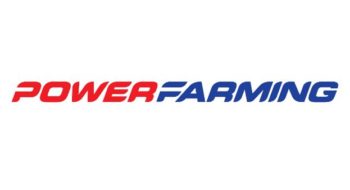
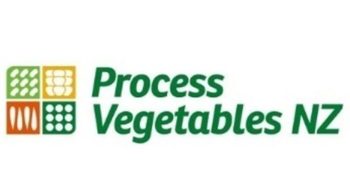
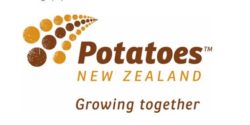
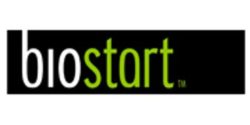
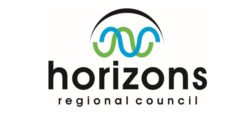
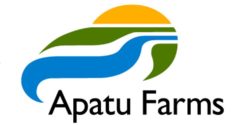

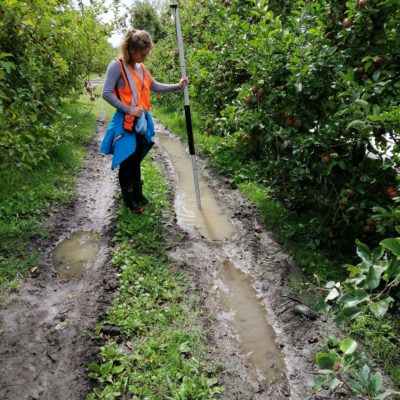
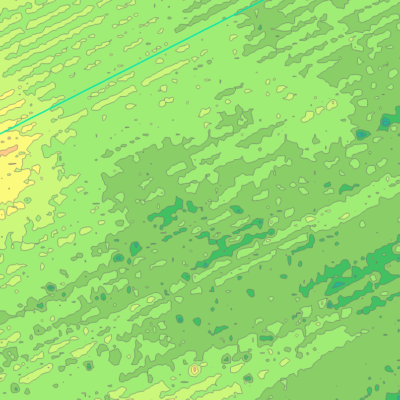














 The project is one of a number being funded under a joint Australia/New Zealand government initiative through the Australian CRC for Spatial Information and LINZ.
The project is one of a number being funded under a joint Australia/New Zealand government initiative through the Australian CRC for Spatial Information and LINZ.



 We are delighted that
We are delighted that 


